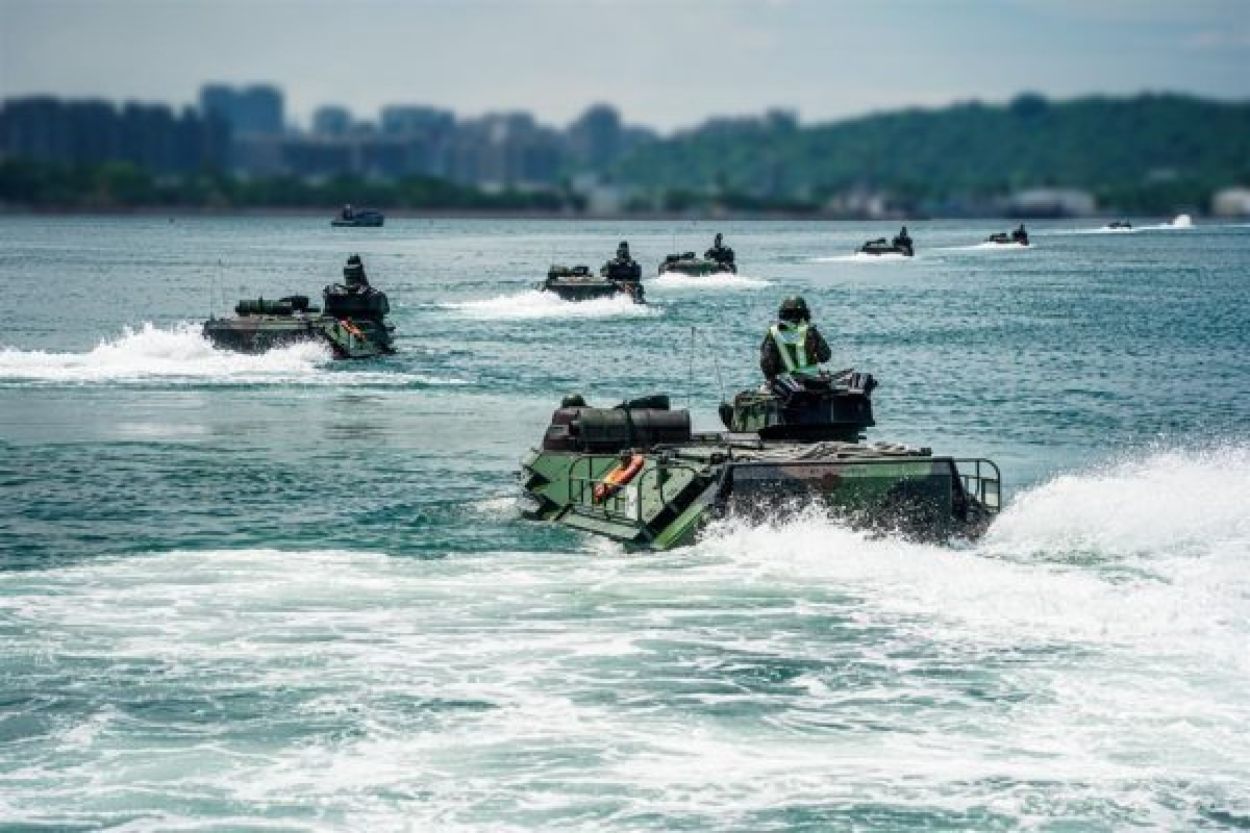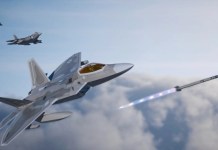An under-development Chinese kamikaze drone can be launched underwater, revealing a clear future use in a Taiwan operation and an amphibious landing. A video showed the Switchblade-like drone, developed by a Chinese university, taking off from beneath the water surface, with its wings folding out.
MiG-29 vs F-16: Why MiG-29 Fulcrums Are Better Suited For Ukraine To Hold Russian Air Force Than Fighting Falcons
Tensions in the Taiwan Strait are at an all-time high, with fervent and extensive Chinese preparations and exercises around the island for a possible military recourse to retake the province. This comes amid increasing US, Japan, and North Atlantic Treaty Organization (NATO) dalliance in far east Asia.
With the US military advisors certainly directing operations, providing technical intelligence besides just arming Taiwan – if not directly participating in a war – an amphibious operation is the most challenging element for the People’s Liberation Army (PLA).
A small tactical infantry support system like a loitering munition, joining other major capital platforms like the Type 075 amphibious Landing Helicopter Dock (LHD), Type 05 amphibious tank, and Z-10 attack helicopters would be a great asset in breaching the heavy beach and inland fortifications the defending Taiwanese will have put up.
The defenders in such battles are generally at an advantage, and the Taiwanese military has also focused on beating back beach landings. Their emphasis on the recent Han Kuang military exercises and the latest military acquisitions from the United States hint toward this.

Drone Fired From Underwater To Hit Land
The drone, called Yousun, is seen being fired from a canister launcher, boosted by possibly a gas-based module, before the wings fold out.
Some comments on Chinese social media pages called it the Peregrine kamikaze UAV, developed by the Northwest Polytechnic University of China in Shaanxi province. This fact, however, could not be verified.
A video from the drone’s nose camera feed shows the reticule approaching a ground target. Popular Chinese affairs commentator Zhao DaShuai also posted a video showing the drone exiting from the surface of a water body.
He described the drone’s dimensions as 2.5 to 3 meters long with a unique folding mechanism. The wing on the top fuselage is sectioned into three parts, with the middle one swivel rotating out and the other two rotating out from each end. Zhao says this gives the UAV “incredible aerodynamic stability and a long flight time.”
How It Helps A Chinese Amphibious Landing
Soldiers from the People’s Liberation Army (PLA) and PLA Navy’s marine units will be landing with complete fire and suppressing support from the amphibious tanks and naval artillery.

While running into beach obstacles set by the Republic of China (ROC, the official name for Taiwan) army, the PLA soldiers must expend immense resources and personnel to get through. While they will indeed be overcome at some point, given the Chinese lead in equipment and manpower, it will likely be a bloody affair.
Thus launching kamikaze drones becomes another source of precision fire on the defenders. This will either distract or destroy their positions, both of which help the attacker move closer.
Zhao describes this as limiting the maneuver of the Taiwanese troops while aiding the Chinese movement. “With hundreds of long loiter time drones, they can provide a form of suppressive fire for an amphibious landing. The idea is, with hundreds of drones flying over an area, the enemy troops cannot get out from cover or maneuver, allowing the attacking side freedom of movement,” he said in the Twitter thread.
Moreover, since they would be launched from under the water, possibly from Unmanned Underwater Vehicles (UUV), Taiwan also cannot focus its fire using the Javelin anti-tank guided missiles (ATGM) on the landing craft or the Unmanned Surface Vehicles (USV) that would otherwise be carrying them.
Long Way To Go
For one, the UAV is in the testing phase and seems to be some time away from a formal acquisition. There will have to be many technical issues the developers would face, which would need to be addressed, and even more after user trials.
It is unknown at what stage of the test the video of the underwater launch was made. The cold launch boost system, too, will require several hours of validation and identify how long and at what depth it can stay underwater.
This is not to mention the lack of clarity over which UUV platform China might employ to launch the drones on Taiwanese beach targets. Information on the drone, like its endurance, type of warhead, ceiling, speed, and optical system, is unavailable.
But the weapon, nevertheless, is unique and promises to radically change how a modern-day amphibious landing attack might pan out – in case it comes down to it.
- The author can be reached at satamp@gmail.com
- Follow EurAsian Times on Google News




